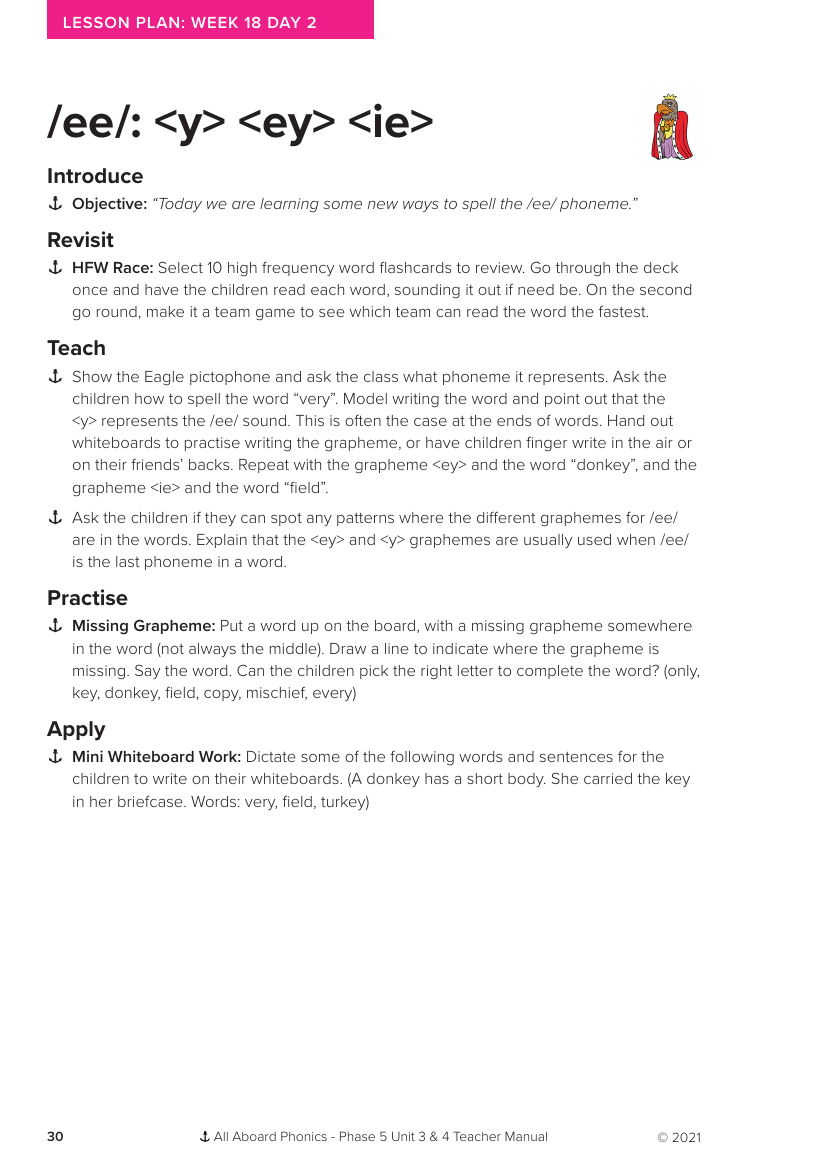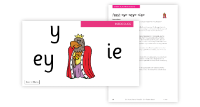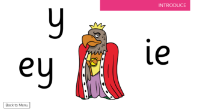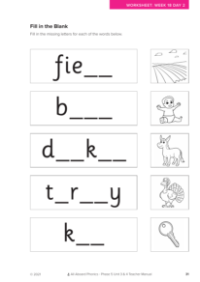English Resource Description
In the second lesson of Week 18, the focus is on expanding the children's understanding of the /ee/ phoneme by introducing them to new graphemes that represent this sound. The objective of the lesson is to teach the pupils alternative spellings for the /ee/ sound, which can be represented by the letters , , and . The lesson begins with a high-frequency word (HFW) race, where children review ten high-frequency words using flashcards. The first round involves reading each word aloud, and the second round turns into a competitive team game to increase engagement and reinforce the words.
The teaching segment introduces the Eagle pictophone as a visual aid to help children associate the /ee/ phoneme with its various graphemes. The class then explores how the in "very" represents the /ee/ sound, particularly at the end of words. Children practice writing this grapheme on whiteboards, in the air, or on each other's backs. This multisensory approach is repeated for the in "donkey" and the in "field". The teacher encourages the children to identify patterns in the use of these graphemes, explaining that and often appear at the end of words. The practice activity involves identifying missing graphemes in words presented on the board. The lesson concludes with an application activity where children use mini whiteboards to write dictated words and sentences that contain the /ee/ phoneme, such as "A donkey has a short body" and "She carried the key in her briefcase", along with individual words like "very", "field", and "turkey".



